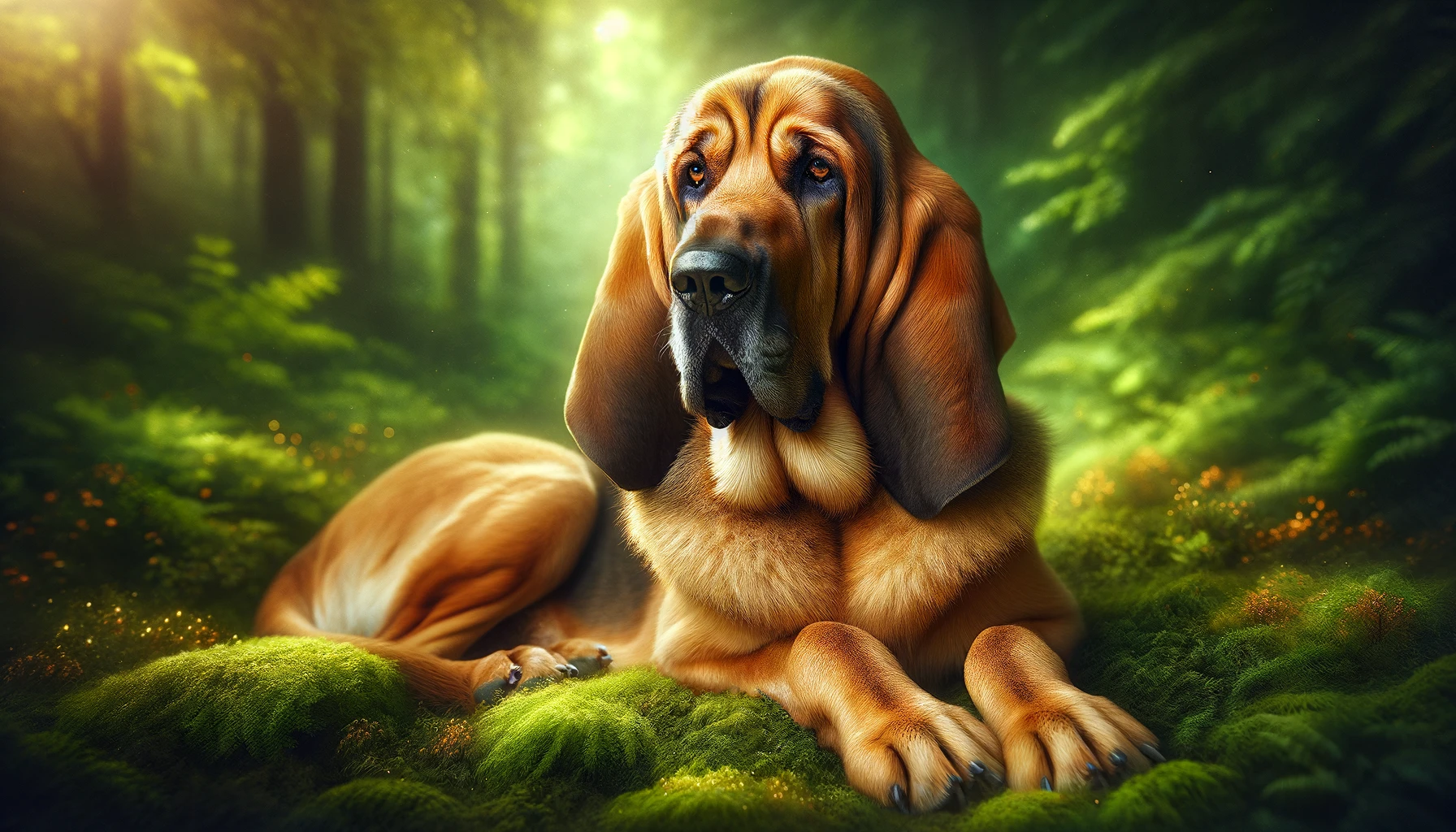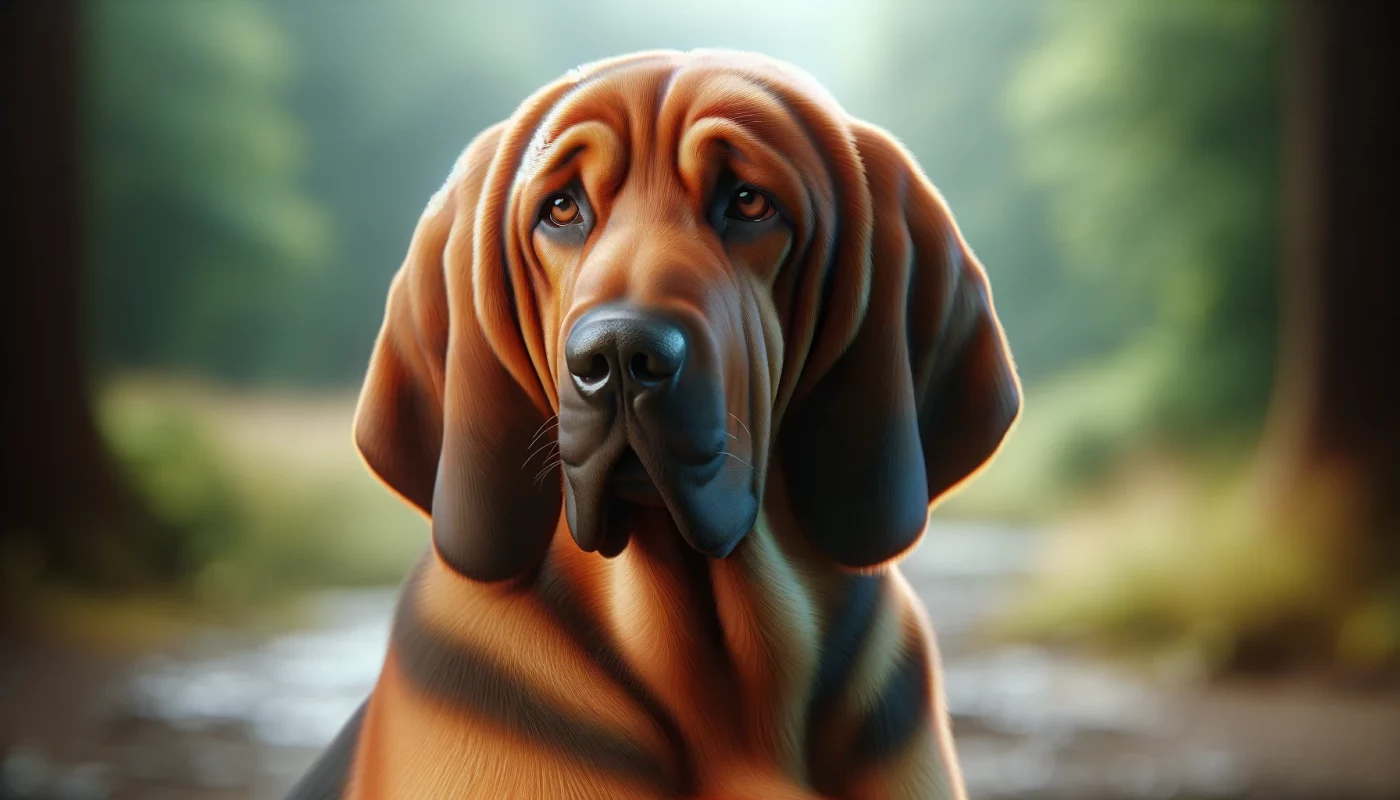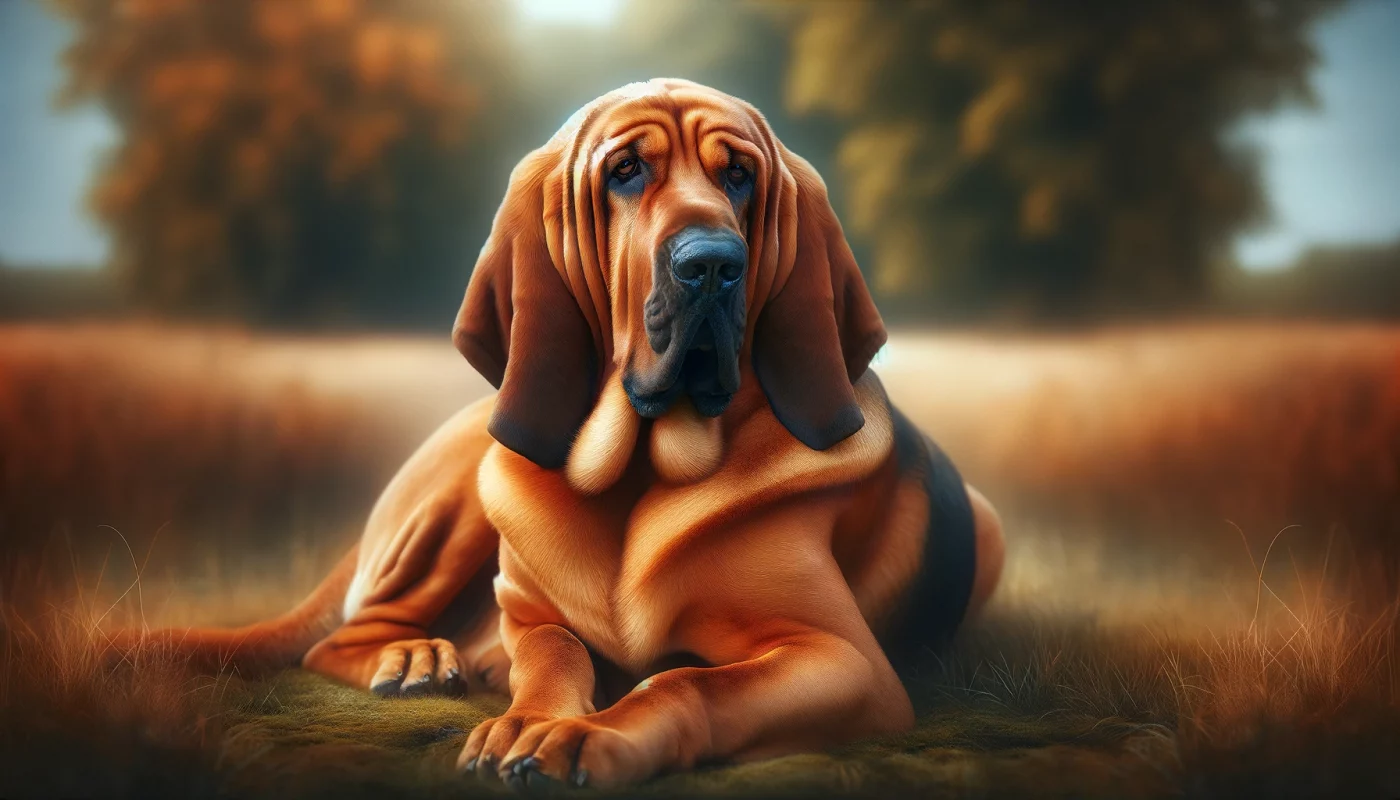
The Bloodhound is a breed renowned for its keen sense of smell and impressive tracking abilities. Historically used for hunting and tracking, this breed possesses a distinctive appearance characterized by their noble and solemn expression, loose skin, and powerful build. Equally varied and beautiful are their coat colors, which range from rich and dark to light and vibrant. These colors not only add to the aesthetic appeal of the Bloodhound but also serve practical purposes in different terrains and hunting scenarios. This article explores seven stunning color variations of the Bloodhound, detailing the unique aspects and appeal of each.
1. Black and Tan

The Black and Tan Bloodhound is the most traditional and recognized color scheme within the breed. This classic pattern features a predominantly black saddle on the back with tan markings on the legs, cheeks, above the eyes, and beneath the tail. This coloration not only provides a striking contrast but also highlights the muscular and sturdy physique of these dogs. Historically, the dark coat helped them remain less visible in dense forests during hunting missions. Today, the Black and Tan remains a symbol of the breed’s regal and diligent nature.
2. Liver and Tan

The Liver and Tan variation of the Bloodhound features a rich, warm liver (dark brown) hue instead of the standard black. The tan markings remain, offering a beautiful contrast against the darker body. This color is caused by a recessive gene that affects the black pigment in the coat, turning it into a deep brown. Liver and Tan Bloodhounds carry a slightly softer expression due to the warmer tones in their coat, yet maintain the breed’s characteristic powerful presence and are equally skilled in tracking and fieldwork.
3. Red

Red Bloodhounds exhibit a striking, uniform deep red coat that can range from a light copper to a rich, rusty hue. This monochrome appearance sets them apart in the field and at shows, emphasizing their sleek lines and solemn facial expressions. The red coat tends to gleam in the sunlight, highlighting their dignified posture and the intricate folds of their skin. Owners of Red Bloodhounds often note that the color can deepen with age, adding to the dog’s majestic appearance as they mature.
4. Black

Solid Black Bloodhounds are rare but visually stunning. They possess a sleek, all-black coat that enhances the mysterious and imposing nature of the breed. The solid black coat may appear intimidating but it beautifully complements the gentle, affectionate temperament that Bloodhounds are known for. This color variation requires careful grooming to keep the coat shiny and healthy, as black can show dust and dander more readily than lighter colors.
5. Tawny

The Tawny Bloodhound features a beautiful blend of golden to light brown shades throughout their coat. This variation is less common but highly prized for its unique aesthetic appeal. The warm hues of the tawny coat make the Bloodhound’s endearing wrinkles and long ears stand out, providing a softening effect to their overall appearance. Tawny Bloodhounds often appear as if they are glowing in natural light, which can make them particularly photogenic.
6. Bicolor

Bicolor Bloodhounds have two distinct colors without the typical saddle pattern. These colors are usually one solid color with patches or spots of another color, such as black and tan, liver and white, or red and black. This less conventional color pattern can result in some truly unique-looking Bloodhounds, each with their own distinct personality shown through their coat. Bicolors are celebrated for their rarity and individuality, making each dog a unique specimen within the breed.
7. Brindle

Brindle Bloodhounds are exceptionally rare and carry a coat patterned with streaks of dark color over a lighter base, usually manifesting as black stripes over a red or tawny background. This striking pattern is often associated with other breeds but is a recognized color within Bloodhounds as well. Brindle Bloodhounds are particularly admired for their camouflage capabilities in wooded or shadowy environments, which historically benefited their tracking abilities.
The Bloodhound’s variety of coat colors not only enhances their aesthetic appeal but also reflects their historical use and breed standards. From the deep, rich tones of the Black and Tan to the rare and striking Brindle, each color variation brings its own unique beauty and set of considerations for care and grooming. These colors, whether serving a functional purpose in the field or simply adding to the breed’s majestic presence, underscore the Bloodhound’s status as a cherished and versatile working dog. The diversity in their coat colors ensures that there is a Bloodhound to catch anyone’s eye, making them a perennial favorite among dog enthusiasts around the world.
Frequently Asked Questions About Bloodhound Colors
1. What are the most common colors of Bloodhounds?
Bloodhounds are primarily known for three standard coat colors: black and tan, liver and tan, and red. The black and tan variety features a predominantly black coat with tan markings above the eyes, on the sides of the muzzle, chest, legs, and the underside of the tail. Liver and tan Bloodhounds replace the black with a deep, warm brown color, while the tan markings remain similar in pattern to the black and tan. The red Bloodhounds are a solid red color, ranging from a light, sandy shade to a deep, rich red. These colors not only define the distinct appearance of the Bloodhound but also contribute to their visibility in various environments, which is critical for a breed used extensively in tracking and search operations.
2. Can Bloodhounds be brindle or have other unique coat patterns?
While the three primary coat colors for Bloodhounds are black and tan, liver and tan, and red, brindle or other unique coat patterns are not standard for the breed. Bloodhounds typically do not display the brindle pattern, which is characterized by stripes of color on a darker base. However, it’s important to note that minor variations in shading or the presence of small white markings, especially on the chest and feet, can occasionally occur. These variations, however, do not affect the breed’s abilities or health. The focus in breeding standards primarily revolves around the Bloodhound’s capabilities as a scent tracker rather than coat color diversity.
3. How does coat color affect a Bloodhound’s health?
There is no direct correlation between a Bloodhound’s coat color and its overall health. However, dogs with lighter colors such as the “red” Bloodhounds may be slightly more susceptible to skin conditions and sunburn compared to their darker counterparts. It is essential for owners of lighter-colored Bloodhounds to take preventative measures against sun exposure, particularly during peak hours. Regardless of color, all Bloodhounds require regular health checks to monitor for breed-specific issues such as ear infections, hip dysplasia, and eye conditions. Good breed management and veterinary care are the best ways to ensure a healthy life for a Bloodhound.
4. Are there any rare colors in Bloodhounds?
While the primary colors of Bloodhounds are well-documented and recognized by breed standards, any color outside of black and tan, liver and tan, and red is considered atypical and rare. Occasionally, a Bloodhound might display a lighter or patchier coat, which could be mistaken for a rare color, but these instances are usually due to genetics and do not represent a separate color category. Breeders and registries typically do not encourage the propagation of non-standard colors as the breed’s tracking ability and temperament are of greater importance than the coat color.
5. What is the most popular Bloodhound color?
The most popular Bloodhound color tends to be black and tan. This classic and striking combination not only gives the Bloodhound a distinctive look but also provides good contrast, which enhances visibility in various terrains during tracking work. The black and tan coloration is iconic to the Bloodhound and is often portrayed in media and literature, further cementing its popularity among both breeders and enthusiasts.
6. Does coat color influence a Bloodhound’s behavior or abilities?
Coat color does not influence a Bloodhound’s behavior or abilities. Bloodhounds are bred primarily for their tracking skills, which are not affected by the color of their coat. The breed’s legendary ability to follow a scent trail for miles is a result of their olfactory anatomy and training, not their coat color. Bloodhounds of all colors can perform equally well in both professional search roles and as family pets, provided they receive appropriate training and socialization.
7. How do breeders determine the potential colors of Bloodhound puppies?
Breeders determine the potential colors of Bloodhound puppies based on the genetics of the parents. Since each Bloodhound inherits one coat color gene from each parent, the resulting puppies’ colors can be predicted with reasonable accuracy if the genetic backgrounds of the breeding pair are known. Common genetic pairings will typically produce puppies that conform to the recognized coat colors: black and tan, liver and tan, and red. Breeding strategies often consider the preservation of these traditional colors while maintaining genetic diversity and health.
8. Are white markings acceptable in Bloodhounds?
White markings are generally considered acceptable in Bloodhounds but are not desired according to breed standards. These markings are typically small and may appear on the chest, toes, or tail tip. Larger patches of white or other prominent markings are uncommon and would be seen as a deviation from the standard. However, such markings do not impact the Bloodhound’s health or tracking abilities, which are the primary focus in breeding and judging the breed.
9. Can environmental factors affect the color of a Bloodhound’s coat?
Environmental factors do not typically affect the color of a Bloodhound’s coat. Coat color is genetically determined and remains consistent throughout a Bloodhound’s life. However, factors such as sun exposure, diet, and age can influence the shade and condition of the coat. For example, prolonged sun exposure might slightly lighten the coat, and aging can lead to graying, particularly around the muzzle and face. Proper care and nutrition can help maintain the coat’s natural color and overall health.
10. How are the different Bloodhound colors registered and documented?
The different Bloodhound colors are registered and documented by kennel clubs and breed registries that maintain standards for the breed. These organizations require detailed records of a Bloodhound’s lineage, coat color, and other physical attributes when they are registered. This documentation helps ensure that breed standards are upheld and allows for the tracking of genetic and health information across generations. Breeders and owners must provide accurate information on the coat color to register a puppy, ensuring that only recognized colors are formally acknowledged.





